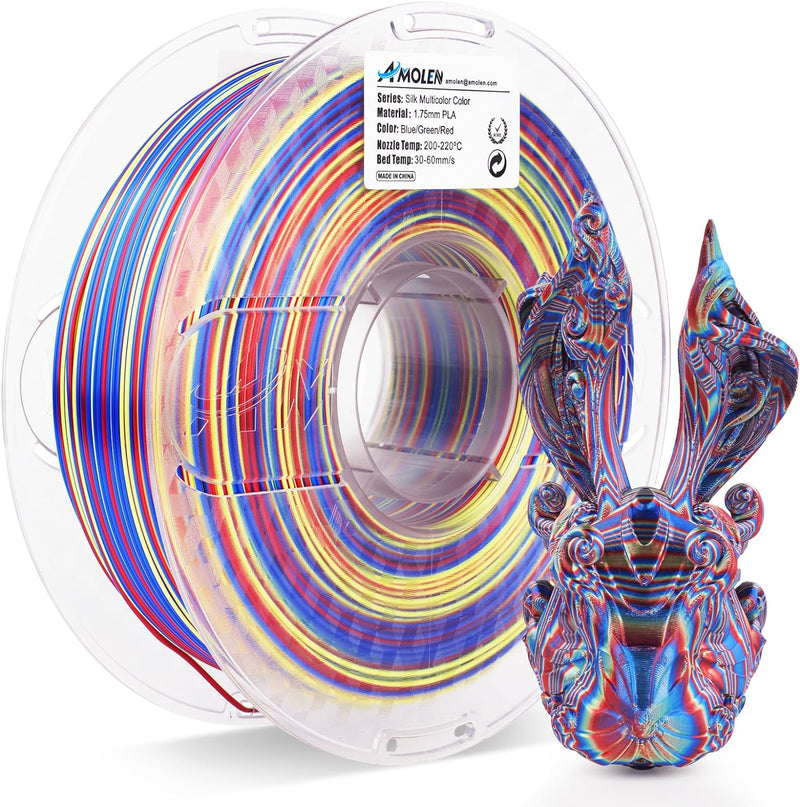Unlocking the Secrets of 3D Printing Filaments: Discover Your Perfect Match!
3D printing has revolutionized the way we create and produce items, offering unparalleled flexibility and creativity. At the heart of this technology lies the choice of filament, which can significantly influence the final outcome of a printed object. With a myriad of filaments available, from biodegradable options to highly durable materials, understanding their properties and applications is crucial for anyone looking to embark on 3D printing projects. Whether you are a hobbyist, an educator, or a professional, knowing the right filament to use can elevate your projects from basic to exceptional. In this article, we will delve into the various types of 3D printing filaments, examining their unique characteristics and recommended applications to help you find your perfect match.

Types of 3D Printing Filaments
When it comes to 3D printing, several filament types dominate the landscape. Each filament has its own set of properties, making it suitable for different applications. The most common filaments include PLA, ABS, PETG, TPU, and Nylon. PLA (Polylactic Acid) is favored for its ease of use and environmental friendliness, making it perfect for beginners and educational settings. ABS (Acrylonitrile Butadiene Styrene) is known for its strength and durability, ideal for functional prototypes. PETG (Polyethylene Terephthalate Glycol) strikes a balance between strength and flexibility, while TPU (Thermoplastic Polyurethane) offers the unique advantage of being flexible, suitable for rubber-like parts. Finally, Nylon is recognized for its toughness and is often used in industrial applications. Understanding these materials will empower you to choose the right filament based on your specific needs.
PLA (Polylactic Acid)
PLA is one of the most popular filaments in the 3D printing community, thanks to its user-friendly nature. Made from renewable resources like cornstarch or sugarcane, PLA is biodegradable, making it an environmentally conscious choice. It prints at lower temperatures, which reduces the risk of warping. Ideal for beginners, PLA is commonly used in prototyping and educational projects. My friend, who is a teacher, often uses PLA for his classroom projects, as it allows students to experiment with design without the frustrations of more complex materials. Additionally, PLA exhibits vibrant colors and a glossy finish, making it visually appealing for decorative items.
ABS (Acrylonitrile Butadiene Styrene)
ABS is a robust thermoplastic known for its strength and durability, making it a popular choice for functional parts and prototypes requiring higher impact resistance. Unlike PLA, ABS can withstand higher temperatures, making it suitable for applications such as automotive parts and electronic housings. However, printing with ABS can be challenging, as it is prone to warping and produces fumes during the printing process. A friend of mine who works in product design swears by ABS for its mechanical properties, but he always ensures to print in a well-ventilated area to mitigate the fumes. If you're looking for a filament that can handle wear and tear, ABS is an excellent option.
PETG (Polyethylene Terephthalate Glycol)
PETG is a versatile filament that combines the best features of both PLA and ABS. It offers a good balance between strength and flexibility, making it ideal for parts that need to withstand stress without breaking. One of the standout properties of PETG is its resistance to moisture, which makes it suitable for outdoor applications or items that may be exposed to water. Additionally, PETG is less prone to warping than ABS, making it easier to print. I remember when a friend created a functional water bottle using PETG; it was not only durable but also showed excellent clarity, showcasing the filament's aesthetic potential.
TPU (Thermoplastic Polyurethane)
TPU is a unique filament known for its incredible flexibility and rubber-like properties. This thermoplastic elastomer allows for the creation of items that require a soft touch or the ability to bend, such as phone cases, seals, and gaskets. Printing with TPU requires a slower speed and careful calibration, as its flexibility can cause issues with feeding through the extruder. However, the results are worth it, as TPU products exhibit excellent durability and shock absorption. A close friend of mine used TPU to create custom insoles for her running shoes, and she was thrilled with the comfort and fit.
Nylon
Nylon is a strong and durable filament that is often used in industrial applications due to its excellent mechanical properties. Its resistance to wear and tear makes it suitable for parts that require strength, such as gears and functional prototypes. However, Nylon has a tendency to absorb moisture from the air, which can affect its printing characteristics and final quality. To combat this, it is advisable to store Nylon in a dry environment. I once saw a demonstration where Nylon was used to create intricate gears that functioned beautifully, showcasing its potential in engineering applications. If you're looking for a filament that offers high performance and reliability, Nylon is a solid choice.
Final Thoughts on Selecting the Right Filament
Choosing the right 3D printing filament is pivotal for achieving successful results in your projects. Each filament type comes with its own set of properties that cater to specific needs, whether it’s ease of use, strength, flexibility, or aesthetic appeal. By understanding the differences between PLA, ABS, PETG, TPU, and Nylon, you can make informed decisions that align with your project requirements. As you embark on your 3D printing journey, consider these factors to ensure that your final products meet your expectations. With the right filament in hand, you are well on your way to creating amazing 3D printed objects that reflect your creativity and skills.






